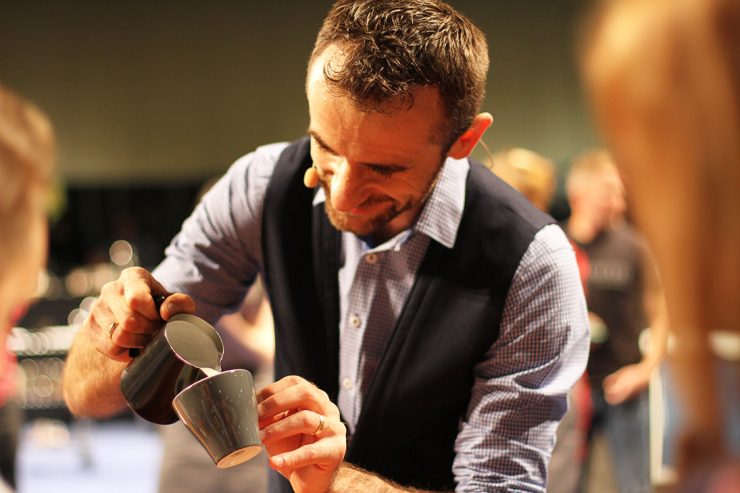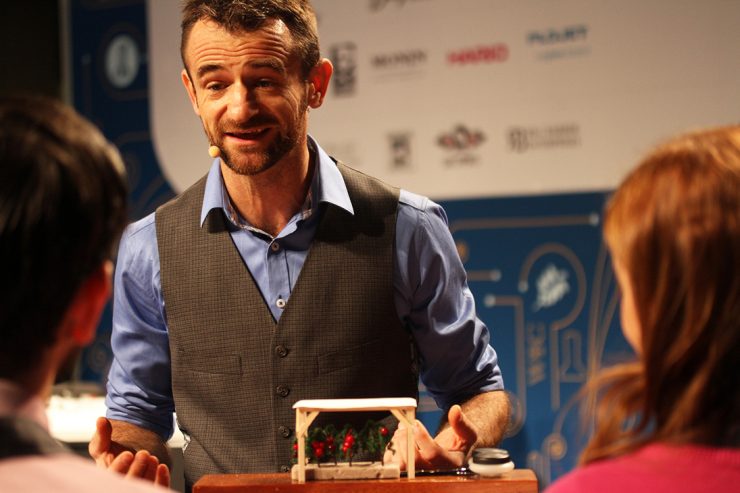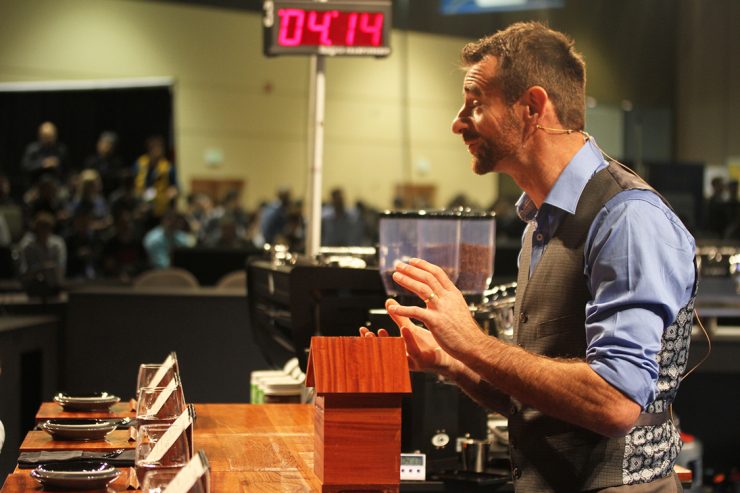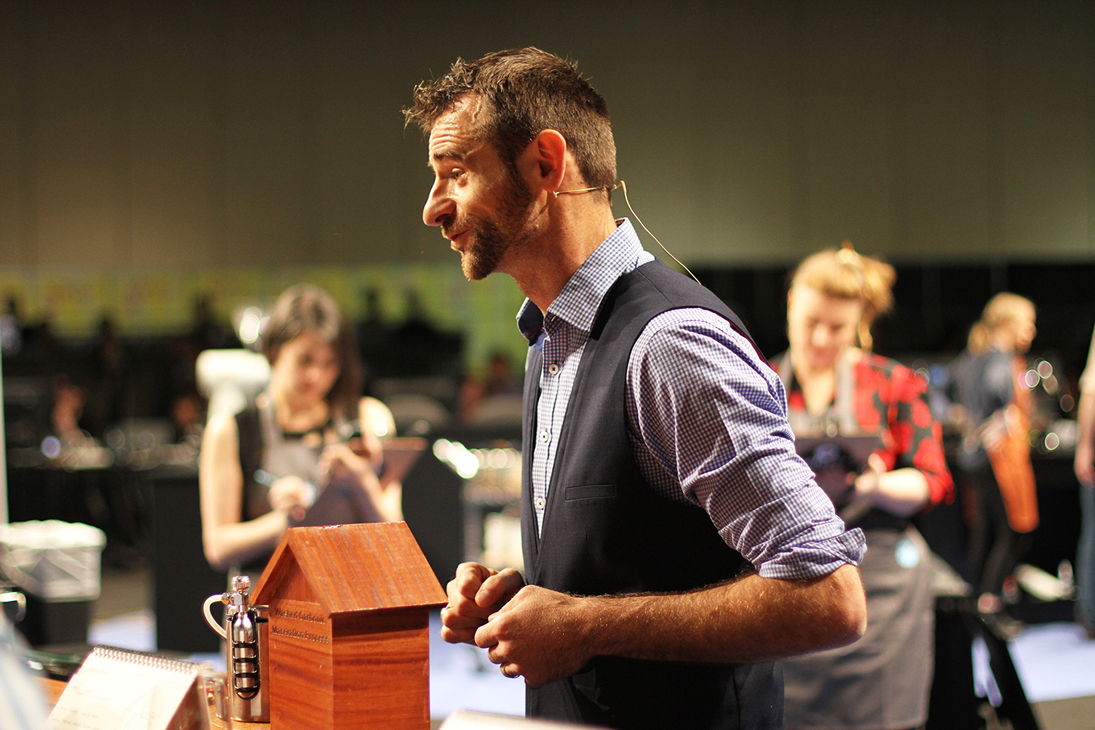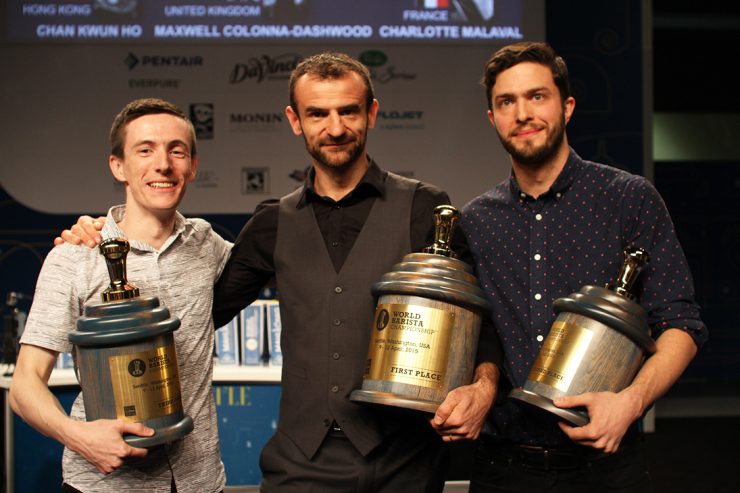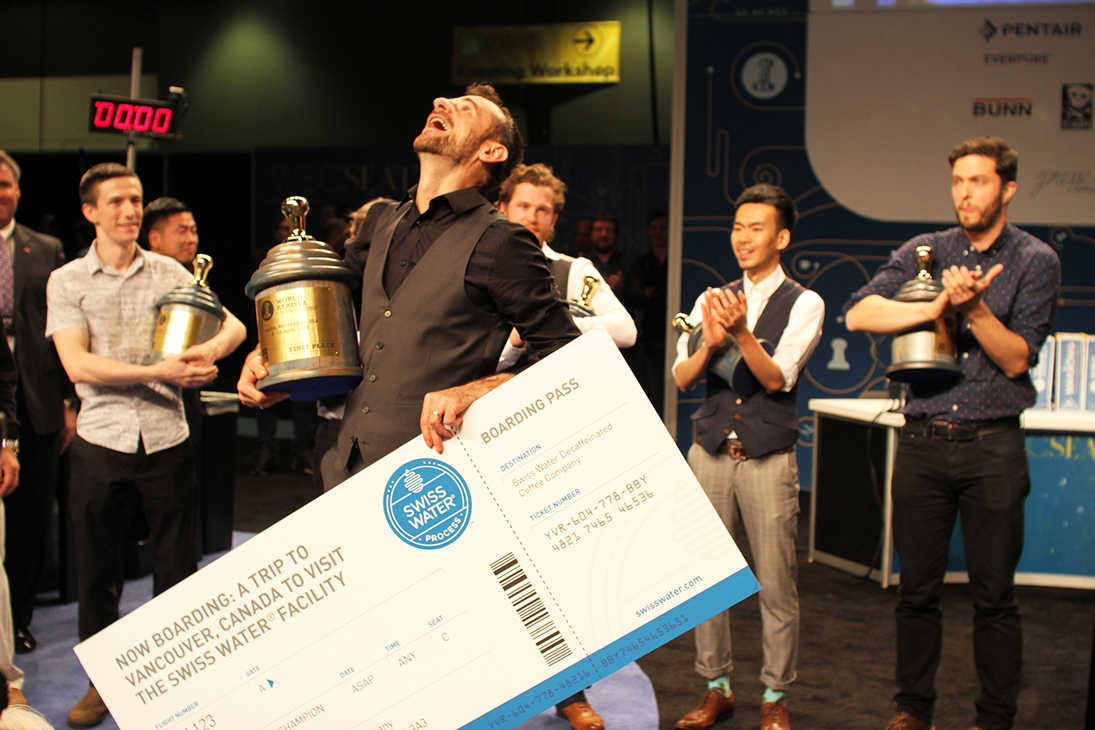Sasa Sestic, a coffee professional, green buyer, and barista from Canberra, Australia, has won the 2015 World Barista Championship in Seattle, Washington. The event took place over four days in conjunction with the SCAA Event trade show, attended by many thousands of coffee lovers from around the globe. Mr. Sestic won the WBC on behalf of Ona Coffee, a specialty coffee company with retail locations and roast works in Canberra, Australia’s capital city.
No coffee is just a coffee, the same as your favorite apple or pear is actually a Granny Smith or Bosc; the fruit’s genetic family tree is extensive, with thousands of individual varieties total, some commercially popular and others exceedingly rare. One such exceedingly rare variety—indeed, among the scarcest commercially cultivated varieties on earth—is the Sudan Rume, which is the coffee variety Sasa Sestic used to win the 2015 World Barista Championship. Get ready to hear the name a lot more.
Sudan Rume is originally from the Boma Plateau region of southern Sudan, near the border with Ethiopia. Sprudge readers might be familiar with the Sudan Rume variety through its place in the Intelligentsia Inmaculada collection, an annual release of rare varieties grown by progressive Colombian coffee producers Camilo Merizalde and Julian Holguin of Finca Las Nubes, a sister farm to the widely known Finca Santuario. Less than 4000 pounds of Sudan Rume is produced by Merizalde and Holguin each year; the coffee then goes through a meticulous cupping and export process from the team at BANEXPORT, based in Bogota.
Different varieties of coffee are hybridized for different purposes: some resist disease, others promote distinct cup characteristics. Sudan Rume has been used by plant breeders for a long time as a source of so-called “quality genes”, according to Intelligentsia Coffee green buyer Geoff Watts. “Sudan Rume was like a go-to variety for quality, but it was never really grown commercial. It was like a research variety that stayed in the box.”
It is no longer in the box. This was a coming out party for the Sudan Rume variety, used throughout Sasa Sestic’s routine, and may well have been the critical difference that helped vault Mr. Sestic through his first appearance at the tournament, in an historically competitive field, all the way to the winners’ circle.
I’ve been asked as to whether or not Sasa Sestic’s routine was conservative, in comparison to some of the other competitors who, for example, passed their espresso shots through a vacuum sealer, or cooked their roasted coffee sous vide for a half an hour, or cut a rug behind the espresso machine while shots dropped. “Conservative” would not be the right word for Sasa Sestic; I’m not sure you could call someone serving a 50% natural process, 50% washed carbonic maceration cappuccino “conservative.” What you can say about Mr. Sestic is that he was a tactician up there on stage, raking in points and presenting a set of experiences tailor-made for the refined WBC Judges’ palate.
But conservative? No. Let’s talk about the carbonic maceration for a second; it’s a term typically associated with natural winemaking. The great wine writer Jancis Robinson can tell you far more than I on the subject:
“Carbonic maceration is a red wine-making process which transforms a small amount of sugar in grapes which are uncrushed into ethanol, without the intervention of yeasts. It is used typically to produce light-bodied, brightly coloured, fruity red wines for early consumption, most famously but by no means exclusively in the Beaujolais region of France.”
The technique is increasingly popular among progressive natural winemakers on the American west coast and especially in Australia, home to some of the most vibrant, experimental, and gleefully weird winemaking on the planet. What happens if you take the above technique and apply it to coffee cherries? And not just any coffee cherries, but some of the rarest on the planet? Apparently you win the World Barista Championship.
I’m being glib, because the hundreds of hours of prep, and his decade-long career as a green buyer and coffee professional, are the X-Factor that let Sasa Sestic triumph on the sport’s biggest stage. But if you’re trying to wrap your mind around how a relative unknown can win his first Australian National tournament, then go on to sweep aside some of the best baristas on the planet and win a World Barista Championship, you have to look past this guy as an individual and look to winemakers and progressive, chance-taking coffee farmers. As you widen the context, his victory comes into focus.
I will be 100% real with you here: I would not have bet on Sasa Sestic to win the WBC at the beginning of the tournament. (If you’re wondering, my money from jump was on the Canadian, Ben Put.) But I was wrong. Sasa Sestic becomes just the second Australian in history to win the WBC, and the first in more than a decade, following Paul Bassett’s win all the way back in 2003. Progressive Australian coffee making thrives on these big stages; Matt Perger’s near-win in 2013 remains enormously influential on the speciality coffee industry, and in its own way Sasa Sestic’s win will be too. Coffee nerds, start buying wine books now.
Jordan Michelman is a co-founder and senior editor at Sprudge, the world’s most popular coffee publication.
The post Sasa Sestic of Australia Wins The 2015 World Barista Championship appeared first on Sprudge.


